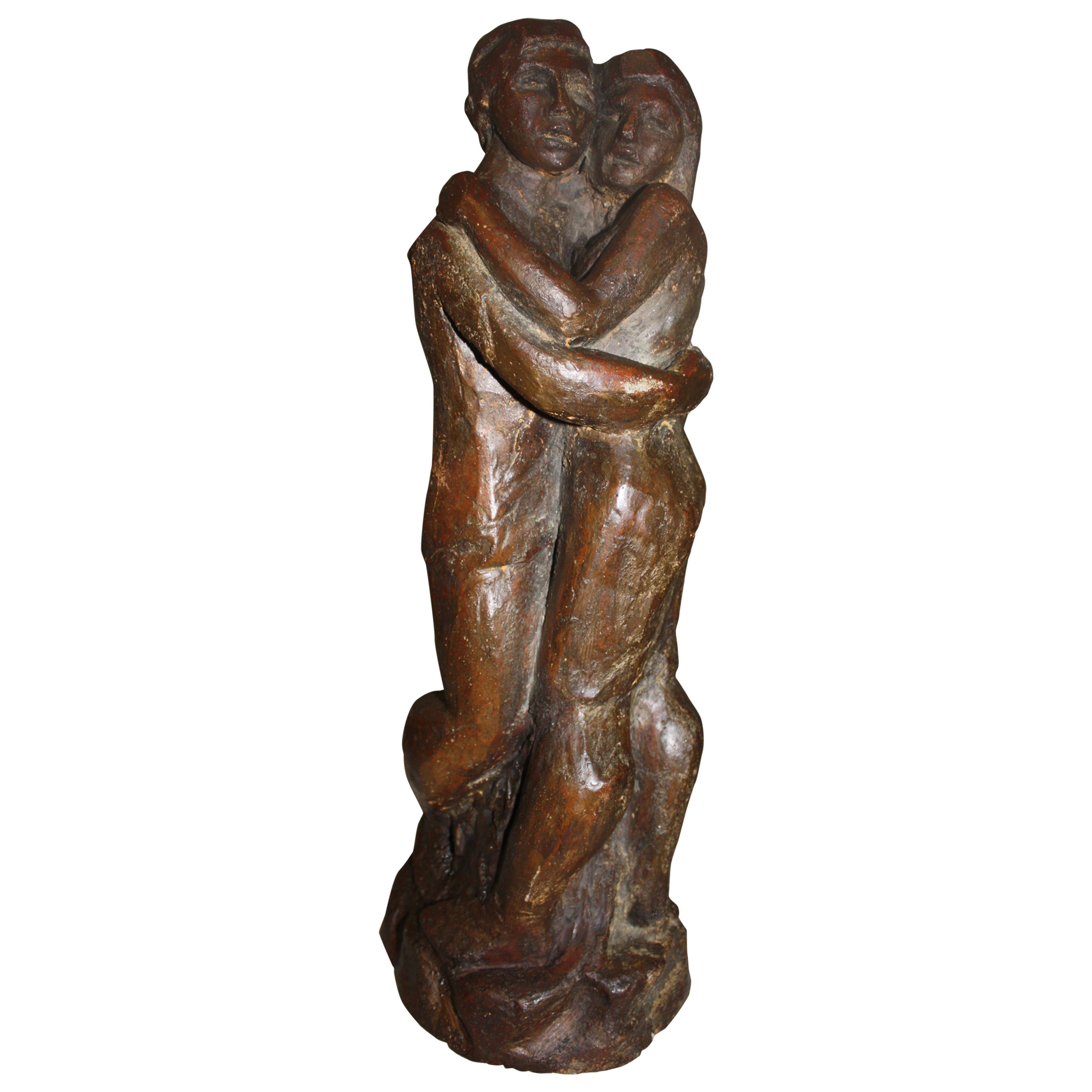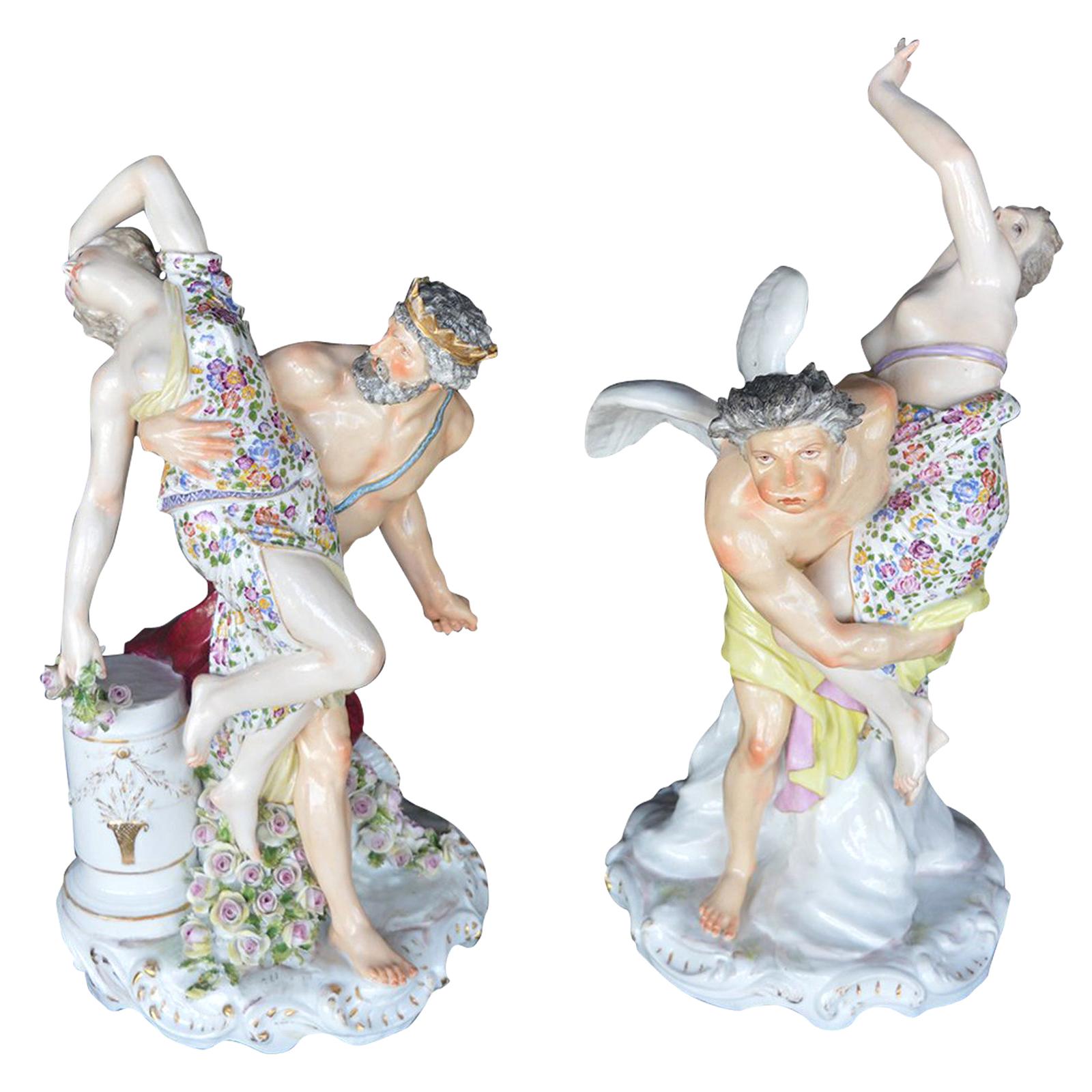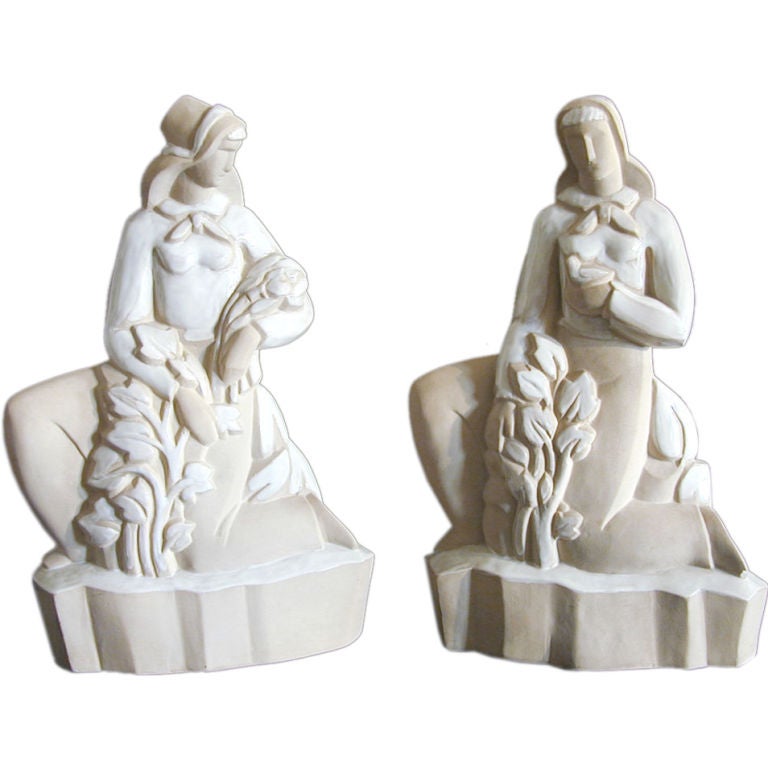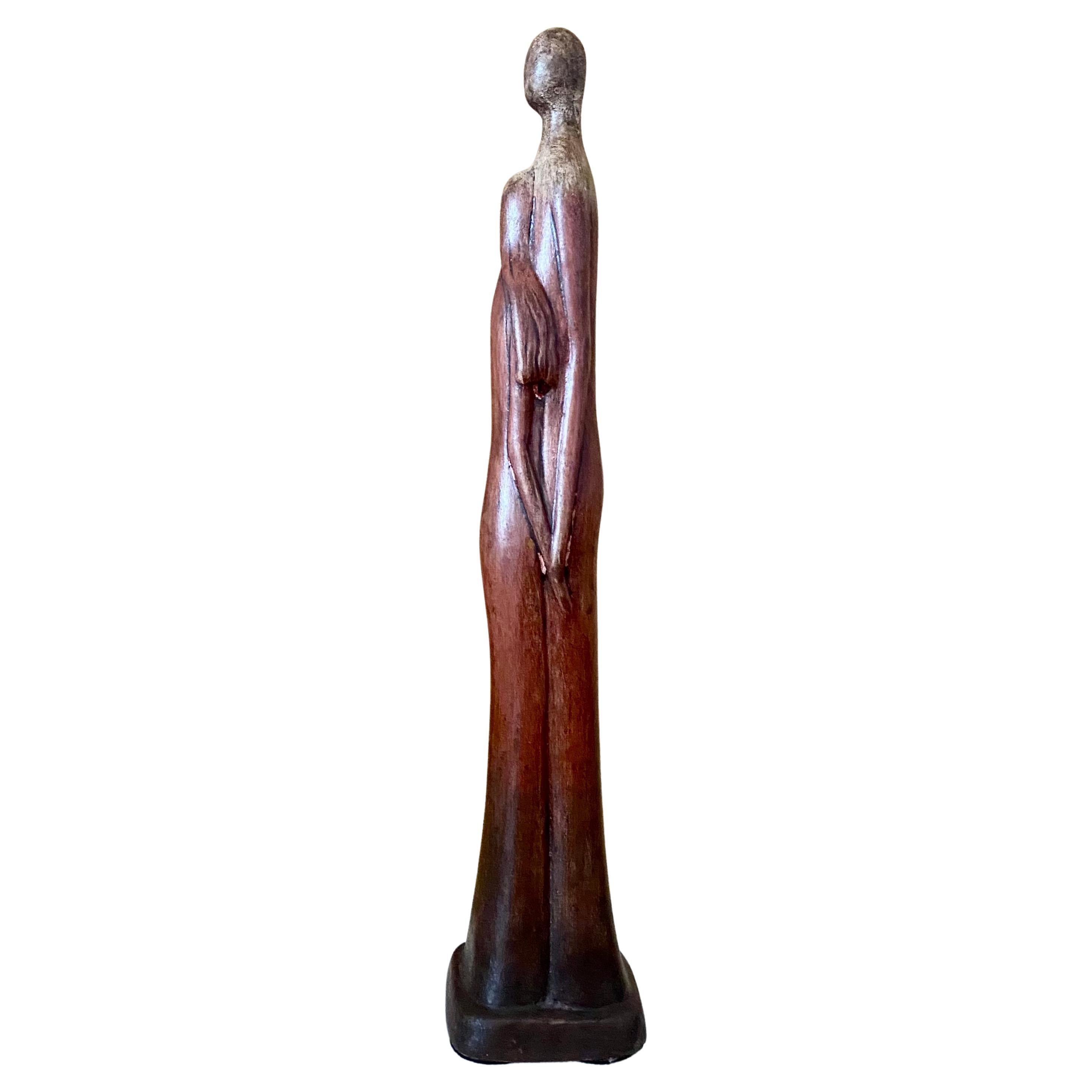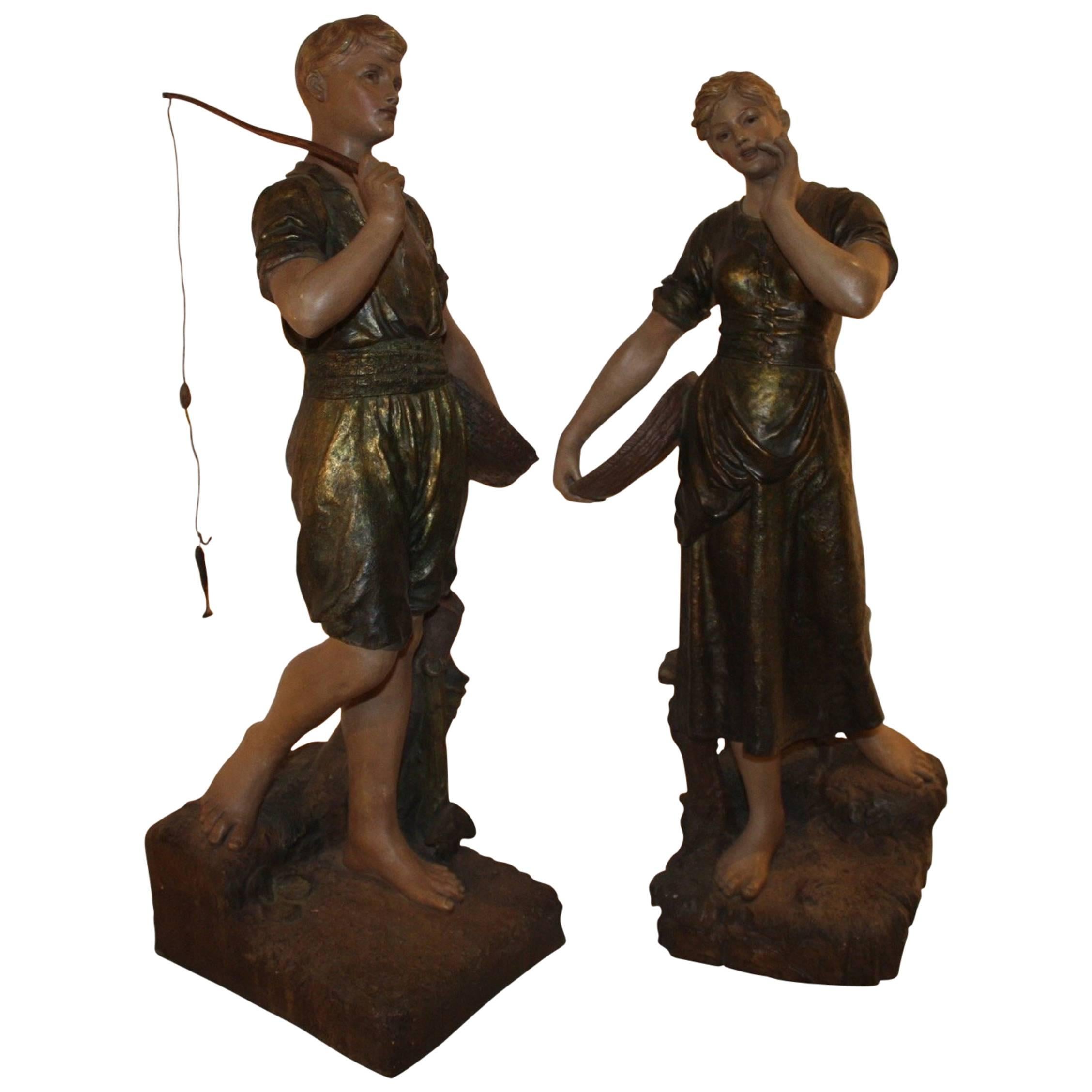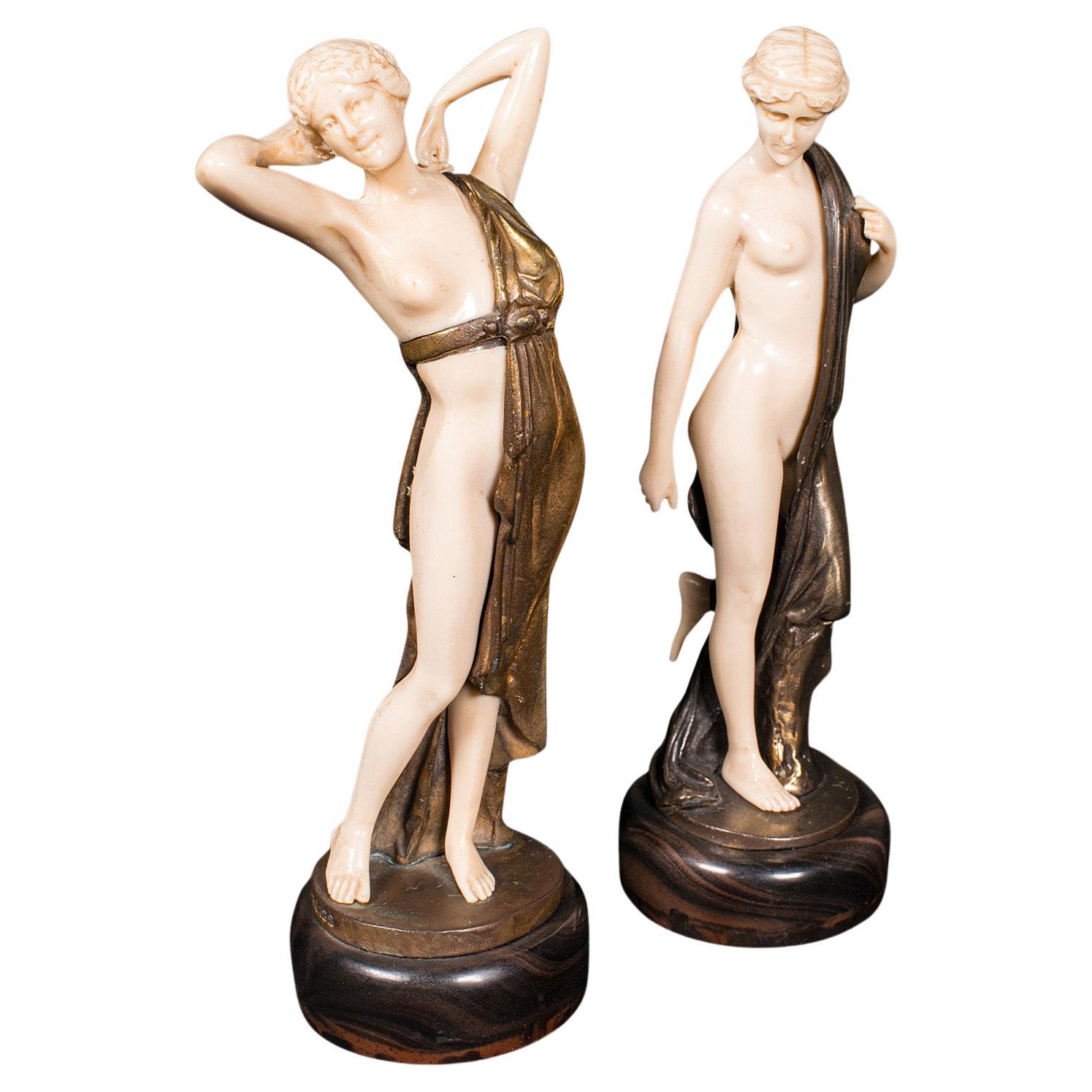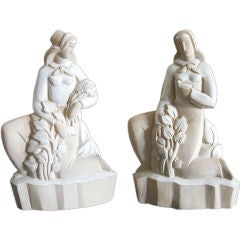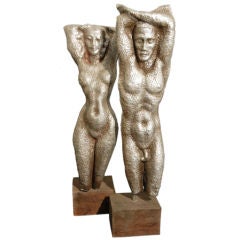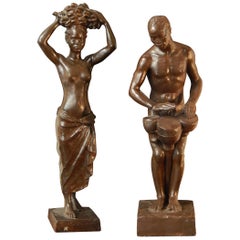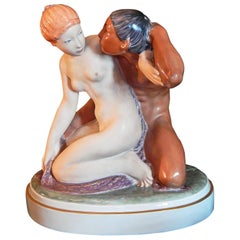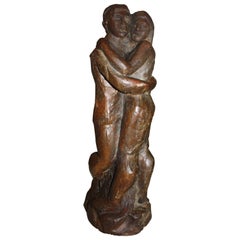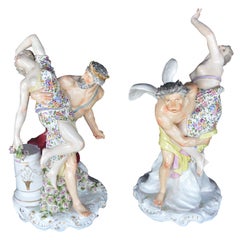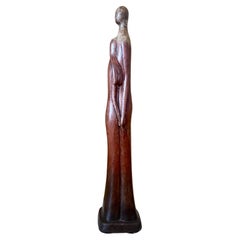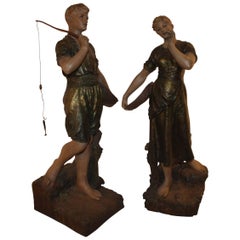Items Similar to Figures with Doves, Rare Art Deco Sculptures by de Vegh, Gray, Red and Blue
Want more images or videos?
Request additional images or videos from the seller
1 of 9
Figures with Doves, Rare Art Deco Sculptures by de Vegh, Gray, Red and Blue
$2,200
$2,75020% Off
£1,680.46
£2,100.5720% Off
€1,931.03
€2,413.7920% Off
CA$3,140.52
CA$3,925.6520% Off
A$3,443.33
A$4,304.1620% Off
CHF 1,798.08
CHF 2,247.6020% Off
MX$41,436.13
MX$51,795.1720% Off
NOK 22,661.92
NOK 28,327.4020% Off
SEK 21,308.03
SEK 26,635.0420% Off
DKK 14,421.25
DKK 18,026.5620% Off
About the Item
This beautifully glazed, rare pair of fine ceramic sculptures, depicting highly-stylized male and female figures, each holding doves, was sculpted by Geza de Vegh for the Phoenix pottery company in New Jersey. The artist was widely known for his high style Art Deco figures, sculpting pieces for the famed Lenox porcelain company (some used as props by Hollywood in the 1930s) and Lamberton Scammell, both in Trenton, as well as Phoenix. The gray, deep pink and blue-green glazes are gorgeous.
About the Seller
4.9
Vetted Professional Seller
Every seller passes strict standards for authenticity and reliability
Established in 2005
1stDibs seller since 2009
484 sales on 1stDibs
Typical response time: 1 hour
- ShippingRetrieving quote...Shipping from: Philadelphia, PA
- Return Policy
Authenticity Guarantee
In the unlikely event there’s an issue with an item’s authenticity, contact us within 1 year for a full refund. DetailsMoney-Back Guarantee
If your item is not as described, is damaged in transit, or does not arrive, contact us within 7 days for a full refund. Details24-Hour Cancellation
You have a 24-hour grace period in which to reconsider your purchase, with no questions asked.Vetted Professional Sellers
Our world-class sellers must adhere to strict standards for service and quality, maintaining the integrity of our listings.Price-Match Guarantee
If you find that a seller listed the same item for a lower price elsewhere, we’ll match it.Trusted Global Delivery
Our best-in-class carrier network provides specialized shipping options worldwide, including custom delivery.More From This Seller
View All"Peace and Plenty, " Rare Pair of Art Deco Sculptures by Phoenix
By Geza De Vegh
Located in Philadelphia, PA
This very rare pair of terracotta sculptures by Phoenix pottery, probably sculpted by Geza de Vegh, date from the 1930s and are strongly ...
Category
Vintage 1930s American Sculptures
Materials
Terracotta
Male and Female Nude Sculptures by Waylande Gregory
By Waylande Gregory
Located in Philadelphia, PA
Rare and singular examples of Waylande Gregory's creative output, this pair of sculptures was formed from heavy sheets of lead, producing a lustrous surface reminiscent of pewter or ...
Category
Vintage 1960s American Sculptures
Materials
Wood
"African Figures", Important Art Deco Sculptures, France, for Printz Interior
By Jean Camus
Located in Philadelphia, PA
Representing the fascination that so many French and Belgian sculptors had in the people of the colonies established by their nations in West and Central Africa, culminating in the e...
Category
Vintage 1920s French Art Deco Figurative Sculptures
Materials
Plaster
$10,000 Sale Price / set
20% Off
"Cupid and Psyche, " Rare Art Deco Sculpture with Exotic Theme by Henning
By Gerhard Henning
Located in Philadelphia, PA
Although this sculpture is reputed to be a telling of the story of Cupid and Psyche -- the Classic story of the union between Soul and Love -- it also serves as a story of the coming...
Category
Vintage 1920s Danish Art Deco Figurative Sculptures
Materials
Porcelain
"Music and Nature, " Rare and Fine Swedish Grace Period Bronze Sculptures
By Stig Blomberg
Located in Philadelphia, PA
Beautifully sculpted, cast and finished, this pair of 1930-vintage Swedish Grace Bas relief sculptures depict nude allegorical figures, one male and one female, each finished in a wa...
Category
Vintage 1930s Swedish Art Deco Wall-mounted Sculptures
Materials
Bronze
"Allegory of Abundance, " Important MGM Movie Prop, Art Deco Sculpture
By Geza De Vegh
Located in Philadelphia, PA
An MGM Studios prop and an important survivor of Hollywood's Golden Age, this piece may be the most ambitious Art Deco sculpture produced by any of America's leading porcelain manufa...
Category
Vintage 1930s American Art Deco Figurative Sculptures
Materials
Porcelain
You May Also Like
20th Century Sculpture "Adam & Eve"
Located in Stockbridge, GA
20th century sculpture ''Adam & Eve'', this work is done with concrete stone and signed under.
Category
Late 20th Century French Primitive Figurative Sculptures
Materials
Concrete
Set of Two Porcelain Sculptures
Located in Los Angeles, CA
Set of two Porcelain sculptures.
Category
Early 20th Century German Figurative Sculptures
Materials
Porcelain
$9,600 / set
Terracotta Sculpture of Two Figures in Love
Located in Round Top, TX
DA tall, slim terra cotta sculpture featuring two figures in an embrace. Wonderful rust finish over entire surface; illegibly signed to base. Large-scale piece that creates a dramati...
Category
Late 20th Century Mexican Rustic Figurative Sculptures
Materials
Terracotta
Amazing Pair of 19th Century French "Personnages"
Located in Stockbridge, GA
Amazing pair of 19th century French "Personnages", fisherman and his companion.
Category
Antique Late 19th Century French Figurative Sculptures
Materials
Plaster
Pair Of Vintage Art Deco Figures, German, Decorative Statuette, After F. Preiss
Located in Hele, Devon, GB
This is a pair of vintage Art Deco figures. A German, cellulose and gilt metal decorative statuette, dating to the early 20th century, circa 1930.
Delightful pair of Aphrodite figures with fine Art Deco taste
Displaying a desirable aged patina and in good order throughout
Cellulose form presents a wonderful creamy hue
Quality gilt metal offers deep tonality to the costume forms
Standing upon circular marble socles and dressed with green baize
Engraved in the manner of Johann Philipp Ferdinand Preiss...
Category
Early 20th Century German Art Deco Figurative Sculptures
Materials
Marble, Metal
Male & Female set of Continental Marble Figures
Located in Swedesboro, NJ
Presenting a stunning Male & Female Set of Continental Marble Figures, these captivating sculptures showcase exquisite craftsmanship and timeless charm. Each figure, carved from prem...
Category
Early 20th Century American Figurative Sculptures
Materials
Marble
$4,500 / set
More Ways To Browse
Vintage Lenox Porcelain
Geza De Vegh
Used Hollywood Props
Lenox Used
Amor Sculpture
Antique Creche
Antique Roman Bronze Statues
Austin Prod
Austin Proding
Baby Statue
Biscuit Statue
Boy With Basket
Bronze And Plaster Nude Male Sculpture
Bronze Greek Goddess
Bronze James Pradier
Bronze Sappho
Bronze Sculpture Henry Moore
Bronze Sculpture Jupiter
